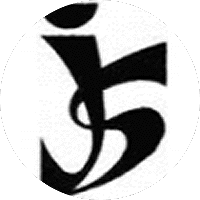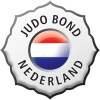HISTORIE of the DUTCH JUDO
Source: Judo Bond Nederland
Revival of judo
After the Second World War the enthusiasm for judo grew through the whole of Japan. The first judo championships were held in 1948 and in the same year the "All Japan judo Association" was founded.
In Europe the "European judo Union" became (E.J.U.) established in the 1948, and the "International Judo Federation" (I.J.F.) in 1953. In Tokyo the first World Championships Judo was held in 1956, and the second in 1958. At the 3e world championships in 1961, in Paris, the Japanese judo hegemony was broken by Anton Geesink, who became world champion. In 1964, he conquered Olympic gold (all categories) in Tokyo and a second world title (heavyweight) in 1965, in Rio the Janeiro.
Willem Ruska prolonged the Dutch successes by his heavyweight world championship in 1967 in Salt Lake City en in 1971 in Ludwigshafen and thereafter two gold medals (heavyweight and all categories) at the Olympic Games in 1972 in München.
Jiu-Jitsu and Judo in the Netherlands
With the arrival of Y. Tani (1899) in London, judo and jiu-jitsu reached the European continent. Around 1910 P.M.C. Toepoel started as a first in The Hague with lessons in jiu-jitsu, followed by Mark van der Sluis, W. Kasulakoff, M. van Nieuwenhuizen and Tops gave P.M.C. Toepoel. In Amsterdam Boretius gave jiu-jitsu-lessons and in 1938, J. v.d. Bruggen opened in Rotterdam the first jiu-jitsu - and the judo school.
Before the second world war jiu-jitsu in west-Europa was a type of "esoteric mixture of secret art and gymnastics" and was teached in private-clubs and small sport schools. One often doubted (frequently rightly) the qualities of each other's methods, without however comparing skills on the mat.
On 29 January 1939 on the initiative of M. van Nieuwenhuizen the "Dutch Jiu-Jitsu Bond" was established, in which occurred already shortly after the war, the first organizational difficulties as a result of personal sympathies and antipathies. Beside the "N.J.J.B." on 3 October 1946 "Judokwai the Netherlands" (J.K.N.) was set up. In 1947, came for the first time "real" judo in our country.
The "gentle way of truth" was introduced in the Netherlands by G. Koizumi, T.P. Leggett, T. Mosson and G. Chew from United Kingdom, Dr. Garaix and Dr. J. Beaujean from France and F. Minführ and P. Buchele from Austria. More than one years later, on 30 October 1948, the Netherlands counted six judokas with 1st dan and four with the 1st Kyu.
On the initiative of G. Koizumi in October 1948 some organizations met, namely "N.J.J.B.", "Judokwai the Netherlands" and "Nakada" and as a result the coordinating organization the "Dutch judo association" (N.J.A.) was set up, which organized the same month the first national sport day with some prominent French yudansha as guests. The judo in the Netherlands progressed strongly; the technical level increased rapidly thanks to visits of Japanese and Korean judo masters.
The "N.J.A." was discontinued after a year, when most of the judoka,s had been united in the "N.J.J.B.". A lot of organizational difficulties, which had their origin in the controversy between amateurs and professional teachers, led to the association "(N.A.J.A.) the " Dutch amateur Judo Association"in 1950.
Fortunately there, were judokas, who understood that the judo in the Netherlands could only profit by cooperation in an as big as possible entity. Orienting discussions in 1955, and careful negotiation attempts then next led (after several discontinuances) on 21 October 1963 o.l.v. Dr. W. van Zijll of the "Dutch sport federation" to the "federation of Dutch judo and Jiu-Jitsu associations" (F.N.J.J.B.), incorporating N.J.J.B., N.A.J.A., J.K.N. and N.K.J.B.
Gradually one got more understanding for each others qualities, both in technical and in organizational area. Anton Geesink established his position as a champion.
After the two years agreed upon, in October 1965 the existence of the "F.N.J.J.B." was extended with a another year, because the integration was not yet completely prepared. Unfortunately the J.K.N. then decided not to participate. The federative cooperation was very useful. Finally the fusion in the Dutch judo world became a fact on 7 October 1966: N.J.J.B. and N.A.J.A., as well as the N.K.J.B. united themselves in "new" N.J.J.B. under new statutes.
Inch by inch (the re)organizations necessary were undertaken; renewals in the governing board and commissions, revisions of regulations, training and graduations; the J.K.N. finally integrated in 1969 in the N.J.J.B. and still everything is "on the move".
Tensions are in such an organization inevitable, which (too) frequently has been proven in the press. On a particular member meeting of the N.J.J.B. on 21 November 1970 became decided to modify the name in "Budo Union Netherlands", B.B.N., with a such structure, that every one practising one or more of the budo-sports could become a member.
On 20 April 1974 a "reorganization Commission" was appointed by the association meeting with as task study of the problems concerning the organization of the association. The particular association meeting of 23 November 1974 gave the fiat to carry out the presented restructuring of the association in accordance with the reorganization report of 1 November 1974.
On 15 September 1979 the name of the association changed from "Budo Bond Nederland" to "Judo Bond Nederland", J.B.N.


